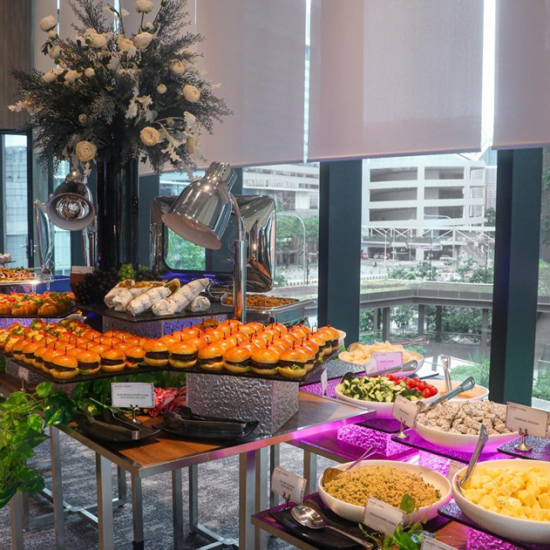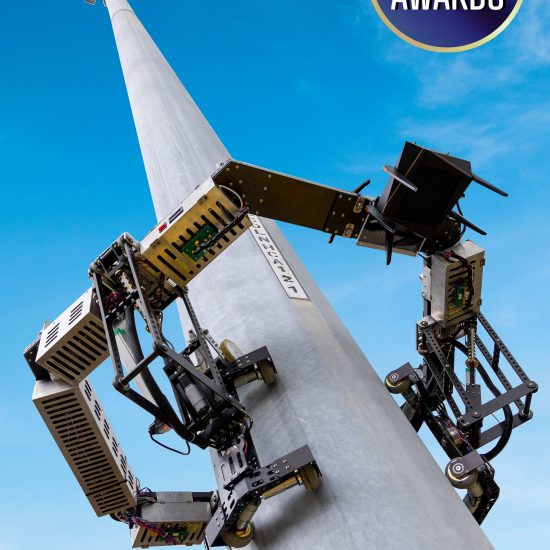 |By Matein Khalid| When Ben Bernanke uttered the word “taper” in May 2013, he triggered a bloodbath in emerging markets and a free fall in “fragile five” currencies that included the Indian rupee and the Indonesian rupiah. However, Asian equities markets, while not immune to a Fed rate hike, are far better positioned for higher US dollar interest rates than in 2013, let alone 2007 or 1998. The collapse in oil prices, the highest growth rates in emerging markets (India, Indonesia, Philippines), structural reforms and record current account deficits are all compelling arguments to invest in Asian equities.
|By Matein Khalid| When Ben Bernanke uttered the word “taper” in May 2013, he triggered a bloodbath in emerging markets and a free fall in “fragile five” currencies that included the Indian rupee and the Indonesian rupiah. However, Asian equities markets, while not immune to a Fed rate hike, are far better positioned for higher US dollar interest rates than in 2013, let alone 2007 or 1998. The collapse in oil prices, the highest growth rates in emerging markets (India, Indonesia, Philippines), structural reforms and record current account deficits are all compelling arguments to invest in Asian equities.
This is not to deny that Asian markets face very real political and economic risks. Another devaluation of the Chinese yuan or a hard landing in the People’s Republic could be catastrophic for Asian exporters. The systemic corruption in Malaysia, the power of the chaebols in South Korea, the military junta in Thailand, the banking crisis in India, terrorist outrages in Pakistan, the reform deficits of Abenomics, China’s military buildup/epic credit bubble and North Korea’s nuclear brinkmanship are all subliminal threats to the Asian bull markets. When the Federal Reserve yanks liquidity from global markets with global rate hikes, Asian markets will feel the pain, even if the pain is not on the scale of May 2013. The biggest threat to Asia is a protectionist backlash in Washington under Hillary Clinton or Donald Trump.
The Federal Reserve will only raise interest rates after the US election in the December FOMC. The subsequent rise in the US dollar is a clear sword of Damocles for emerging markets, even in Asia’s macro fortresses. This is the reason I favor “domestic” themed emerging markets with excellent demographics (Pakistan), markets leveraged to the Apple ecosystem/Silicon Valley (Taiwan) or markets with a reform momentum (Indonesia, India, Vietnam). The Philippines at 18 times forward earnings is the most expensive stock market in Asia and President Duterte’s state sanctioned killing spree has unnerved global investors. While I am skeptical about local currency debt in most countries, there is clear value in India, Indonesia, Thailand and Taiwan bonds.
Even though the Thai military junta that seized power in May 2014 has no plans to return to the barracks and has consolidated power with its referendum, Bangkok offers selective value at SET 1450. While government spending, not sluggish domestic demand or exports, has goosed Thai GDP growth above 3%, the military coup has not solved the kingdom’s red shirt/yellow shirt social schism or its structural economic woes. Thailand is the Detroit of Southeast Asia and is the gateway to the high growth Mekong Delta. As non-performing loans peak and valuations have fallen to book value, Thai banks offer some of the most compelling value in Southeast Asia. Bangkok Bank and Siam Commercial Bank are my two favourite Thailand banks.
The Mainland regulator’s decision to allow Chinese insurers to invest in Hong Kong equities has led to a fabulous rally in large cap colossi such as HSBC Holdings. The Hong Kong Shanghai/Shenzhen connect schemes have also boosted Chinese inflows into the former British Crown Colony. At 0.8 times price to book value, China’s biggest commercial banks are some of the cheapest companies in Asia (with good reason!), with 5% plus dividend yields. Beijing is determined to maintain the solvency and liquidity of its Big Four bank. I believe the Wall Street hit has created value in the Chinese H share index in Hong Kong at 9400 or 8 times earnings.
Since the People’s Bank of China will increase monetary stimulus, Ping An Insurance, CCB and the Bank of China will rock. The IPO of megabank Postal Savings Bank of China (PSBC) in Hong Kong will be hugely successful as the deal is presold and strategic investors include J.P. Morgan, Temasek, Alipay and Tencent.
My favourite country pair trade in Asia? Buy the South Korean index fund against Singapore. Margins and earnings will rise in South Korea thanks to the won/yen cross rate and easy money from the Bank of Korea. The tyrant in Pyongyang will be contained by China and the nuclear test is not a prelude to war on the DMZ. The hottest money making market in Asia? Pakistan at 8.5 times forward earnings and a 7% dividend yield!
Currencies – Fear, risk and value in emerging market currencies
The $5 trillion global foreign exchange market is hyper-sensitive to shifts in the ultra-easy money policies of the G-7 central banks. So it is no coincidence that the prospect of another Federal Reserve interest rate hike has led to a volatility spike across emerging markets. This has an immediate impact on risk sensitive, high yield emerging currencies and international capital flows to Third World local debt markets at the merest hint the central bank money pump will slow down. This is exactly what happened last week. ECB President Mario Draghi dissed the prospect of additional quantitative easing. Boston Fed President Eric Rosengren called for a Federal Reserve rate hike this autumn. The Bank of Japan faces technical limits to its “shock and awe” monetary easing now that Kurodasan has nationalized both the Yen bond market and the Nikkei Dow. This led to a spike higher in global bond yields, a spike higher in emerging market currency volatility and a steeper US Treasury bond yield curve.
When volatility rises in the foreign exchange market, high yield commodity currencies most sensitive to risk/flows are immediate victims. This is the reason the Canadian dollar was a highly profitable short at 1.29 and the loonie has fallen to almost 1.32 as I write. I still contend that the Canadian dollar can fall to 1.36 this winter if Saudi Arabia, Russia, Iran and Iraq do not negotiate a convincing output freeze at the OPEC Algiers meeting.
Emerging markets currencies can tank when volatility and risk aversion rises in the global markets. For instance, the South African rand lost 6% from early August to its recent 14.75 September low, yet the Russian rouble has shown a lot more resilience at 65 despite the fall in crude oil and Western sanctions related to the Kremlin’s war in Ukraine and annexation of Crimea. I can easily envisage a fall in Russian rouble to 68 as Bank Rossiya slashes rates.
A CNBC-TV18 report hinted at a potential devaluation of the Indian rupee. This was denied by the Finance Ministry but the rupee sank to 67 against the US dollar. The RBI has called commercial banks to check their dollar positions and Trade Minister Sitharaman has denied the report. However, it is undeniable that the dramatic drop in Indian G-Sec yields, another repo rate cut and a Fed rate hike portends rupee weakness. I expect the rupee to trade in a 66 – 68 range in the next six months.
President Duterte’s political bombshells have triggered a spasm of foreign selling in Manila equities and Philippines peso debt. The fall in the peso to almost 48 is excessive given the sheer scale of OFW remittances and the $30 billion outsourcing industry. This could be an opportune moment to buy the Philippine peso against the Thai baht in the NDF forward market.
The Mexican peso is the most undervalued currency in the emerging markets, thanks to the prospect of Fed rate hikes and Donald Trump’s poll lead in Ohio. The Mexican peso is extremely cheap at 19.2 against the US dollar, having lost almost 3% last week alone. This is now an extreme, crowded short trade that bears no relation to macroeconomic logic, though I concede a Trump win would be a disaster for Pobre Mexico! Gringolandia politics precludes a major buying base for the Mexican peso which can well depreciate to 20 in October.
The Russian rouble plunged from 30 to 85 after Vladimir Putin invaded Ukraine, annexed the Crimea and moved to a free float currency regime at the precise moment oil prices tanked, devastating the Kremlin’s revenue base. Russia has now suffered its biggest recession since Boris Yeltsin’s banking crisis in August 1998. Russian rouble implied volatility is far too low at 13 given that it was 26 last December. Russian Eurobonds and Russian equities were among the world’s best performing asset classes in 2015 – and the rouble rose 14% against the US dollar in 2016 despite stagnant oil prices and Western sanctions. The Russian rouble is now overvalued at 65 as the economy continues to contract and Russia’s inflation rate is the world’s highest save Belarus and Zimbabwe.
Money market futures signal a 50% probability of a December FOMC rate hike – and there could be two rate hikes in 2017. This means a 1% Fed Funds rate and King Dollar at full throttle. This will be the time G-10 and EM currencies plunge. How far? Loonie at 1.50. Aussie 0.64 cents. Sterling 1.15. Get real, get out!
Wall Street – Wells Fargo and banking’s latest scandal
Wells Fargo was, until last week, America’s most valued money center bank, the crown jewel of Warren Buffet’s investment portfolio, a model of corporate excellence whose pedigree goes back to the rise of San Francisco as a financial hub in the 1850’s after the California gold rush. Yet Wells Fargo is now mired in one of the most sordid scandals in post 2008 global banking. Wells Fargo retail bankers opened more than 2 million unauthorized accounts without the knowledge of clients to meet sales targets. The bank has fired more than 5300 employees (its retail banking empire, called the Community Bank, has a payroll of 100,000) and its CEO John Stumpf, Mr. Clean of banking will be grilled by a hostile Congress in the Senate. The bank’s shares have plunged from a 52 week high of 56 to 46. While Goldman’s Blankfein survived the Abacus CDO and J.P. Morgan’s Jamie Dimon survived the London Whale scandal, Stumpf’s scandal comes amid an election season where Big Banking is in the crosshairs of both Mrs. Clinton and Trump. Wells Fargo has paid $185 million to settle charges but I can easily envisage criminal charges of property/identity theft against supervisors in the bank’s California branch network.
Warren Buffett owns 10% of Wells Fargo, the biggest mortgage lender in the US that avoided the capital markets losses and toxic derivatives disasters of 2008. Wells Fargo has agreed to end its controversial incentive linked sales target and cross-selling strategies that led to this scandal. The fired retail bankers opened unauthorized accounts to hit sales targets and receive bonuses. It does not help Wells Fargo’s public reputation that Carrie Tolstedt, the head of retail banking, has taken home $125 million in compensation. An executive pay clawback as mandated by Dodd Frank is now inevitable, as was the case in J.P. Morgan’s London Whale trading scandal.
It is entirely possible that Wells Fargo will have to pay much higher fees before this scandal is over. The bank’s decision to eliminate incentive based product sales goals and cross selling targets will also hit its formidable retail banking revenue generation machine. After all, retail banking is 57% of total revenue and 60% of pretax income for Wells Fargo, the reason it enjoyed such a valuation premium in the stock markets. Carrie Tolstedt will not survive but the Senate Banking Committee could demand a wholesale purge of senior executives at the bank. The bank has faced huge reputational damage with investors, regulators and customers. This will distract senior management from new growth initiatives. I would only become interested in Wells Fargo shares if the bank falls to 40. It is impossible to quantify the legal bill and reputational damages the bank will face as Elizabeth Warren grills CEO john Stumpf in the Senate and the global media.
United Technologies (UTX) is one of the world’s most highly respected industrial conglomerates, the owner of such iconic brands at Pratt and Whitney aircraft engines, Otis elevator and HVAC systems. At 100, the bank trades at 14.5 times earnings based on a consensus 2017 estimate of $6.92 EPS. The company beat second quarter Street estimates thanks to stellar results in its Climate Controls and Security units, a business that generates 20% plus operating margins and is the firm’s growth engine. The shares have sagged due to exposure to the UK, European and Chinese building markets. However, I doubt if there is more than $7 downside in the shares even if Wall Street gets ugly in October. This means downside at UTX is limited to 94 or 13.4 times forward earnings at a time when management is poised to raise guidance and implement a share buyback that could be at least 3% of market capitalization.
United Technologies is a global industrial colossus because 45% of its $56 billion revenue is recurrent and CEO Greg Hayes divested Sikorsky Helicopter for $9 billion to boost shareholder returns via buybacks. With a dividend yield of almost 3%, this Dow 30 stock is in the value zone. A 94 – 120 trading range means the enables myriad money making options based strategies.






